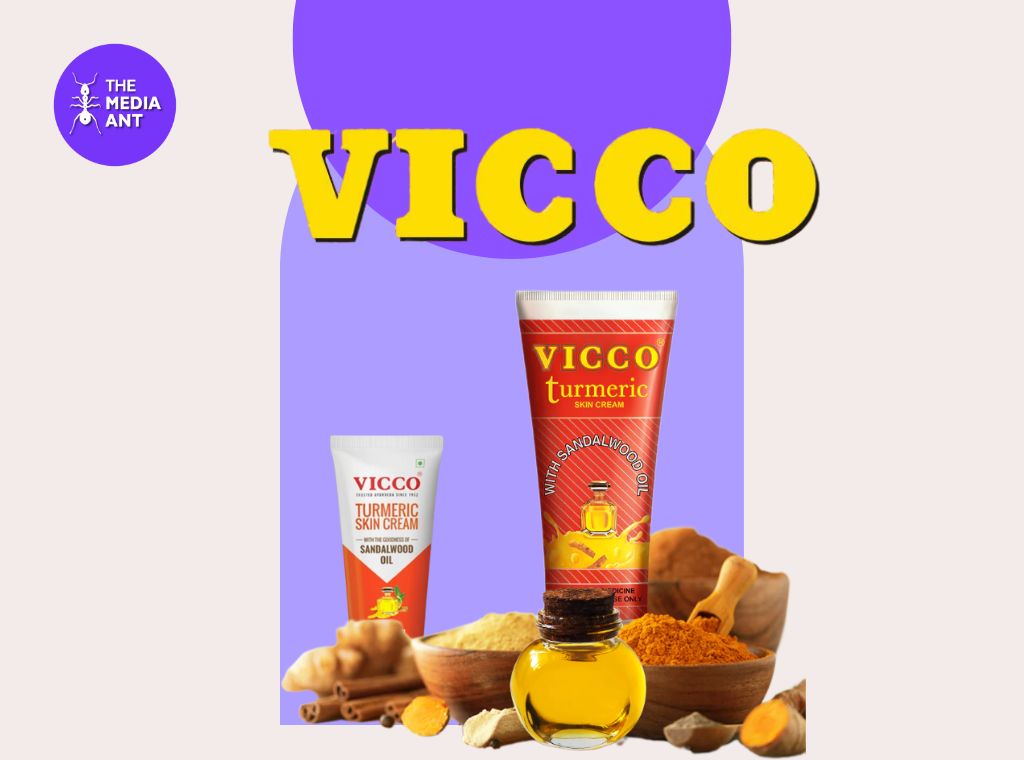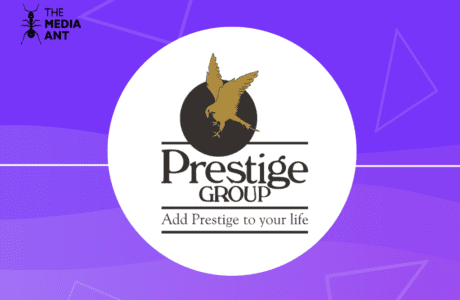For many Indians, the iconic jingle “Vicco Turmeric, Nahi Cosmetic” isn’t just an advertisement; it’s a slice of nostalgia. Vicco, founded in 1952 by Keshav Vishnu Pendharkar, has been a household name for over seven decades, championing Ayurveda long before it became a global trend. What started as a humble operation selling Ayurvedic toothpowder has grown into a multimillion-dollar brand, synonymous with natural wellness and Indian heritage. This blog explores Vicco’s extraordinary journey, its marketing evolution, and the strategies that have kept it relevant through generations.
A Glance at Vicco’s Evolution
1950s–1960s: The Swadeshi Spirit and Word-of-Mouth Success
Post-independence India was ripe for Swadeshi products, and Vicco capitalized on this sentiment. Its first product, an Ayurvedic toothpowder, was marketed door-to-door in eco-friendly cotton packaging. The company relied heavily on community trust and personal recommendations to build its customer base. The all-natural, homegrown positioning resonated deeply with a nation eager to support indigenous brands.
1971–1980: Diversification and Iconic Products
Gajanan Pendharkar, Keshav’s son, spearheaded the diversification of Vicco’s product line. Two iconic products emerged during this period:
- Vicco Turmeric Skin Cream: Despite initial skepticism about its yellow hue, smart merchant-led demonstrations alleviated concerns.
- Vicco Vajradanti Toothpaste and Powder: Reinforcing the brand’s Ayurvedic roots, this product catered to oral health using natural ingredients.
The focus was clear: combine Ayurveda’s authenticity with innovative marketing strategies.
1980s: The Golden Era of Television Marketing
Vicco became the first brand to sponsor a TV show in India on Doordarshan, marking a new era of mass media advertising. The catchy jingle “Vicco Turmeric, Nahi Cosmetic”, coupled with aesthetically pleasing visuals, became an instant hit. This campaign ensured that Vicco’s products were not just recognized but deeply embedded in the cultural fabric of India.
1990s–2000s: Expanding Horizons
- Urban and Rural Penetration: Vicco strengthened its distribution network, ensuring its presence in urban, semi-urban, and rural markets.
- International Markets: Vicco expanded globally, reaching over 45 countries and tapping into the growing interest in natural Ayurvedic products.
- New Competition: With players like Dabur, Colgate, and multinational giants entering the Ayurvedic space, Vicco doubled down on affordability and legacy products to retain its market share.
2010s: Navigating the Patanjali Wave
The emergence of Patanjali disrupted the Ayurvedic market, yet Vicco maintained its position by:
- Sticking to affordable pricing.
- Leveraging its iconic products and heritage appeal.
- Capitalizing on a loyal customer base.
However, newer audiences began associating Ayurveda with competitors, highlighting the need for modernization in Vicco’s marketing approach.
2020s: Embracing Digital Transformation
As digital-first consumers became a dominant demographic, Vicco adapted by:
- Launching social media campaigns: Collaborating with platforms like Instagram and YouTube to attract Millennials and Gen Z.
- Hygiene-Centric Messaging: During the COVID-19 pandemic, Vicco emphasized its natural, chemical-free formulations as a safer alternative.
Vicco’s Marketing Strategies:
1. The Power of Jingles and Cultural Integration
The unforgettable jingle “Vicco Turmeric, Nahi Cosmetic” is a masterclass in brand recall. It resonated across generations, becoming a cultural phenomenon that still evokes nostalgia. Vicco’s ability to blend Ayurveda with relatable advertising cemented its position in Indian homes.
2. Product Diversification Rooted in Ayurveda
From skincare to oral care, Vicco’s products were grounded in Ayurveda. Key offerings like:
- Vicco Turmeric Skin Cream for blemish-free skin.
- Vicco Vajradanti Toothpaste for dental health.
- Vicco Narayani for pain relief.
This consistent emphasis on natural, Ayurvedic solutions differentiated Vicco from competitors reliant on chemical formulations.
3. Affordable Pricing
Vicco strategically positioned itself in the affordable category, making Ayurvedic wellness accessible to middle-class families. This pricing strategy ensured loyalty, especially in price-sensitive markets.
4. Leveraging Mass Media
Vicco’s early adoption of television advertising allowed it to reach millions. Sponsoring popular TV shows in the 1980s and 1990s enabled widespread brand awareness, creating an emotional connection with audiences.
5. Global Market Expansion
With Ayurveda gaining global recognition, Vicco successfully expanded to international markets, emphasizing its natural, cruelty-free formulations. This move diversified its revenue streams and built global credibility.
Marketing Mix: The 4Ps
Product
- Focus on Ayurveda-based formulations.
- Wide range: skin care, oral care, and pain relief.
Price
- Affordable pricing targeting middle-class consumers.
- Competitive pricing compared to multinational brands.
Place
- Strong distribution across urban, rural, and international markets.
- Presence in 45+ countries.
Promotion
- Iconic jingles and TV advertisements.
- Recent focus on digital marketing and influencer collaborations.
SWOT Analysis
Strengths
- Strong brand legacy and trust.
- Affordable, Ayurveda-based products.
- Loyal customer base across generations.
Weaknesses
- Limited innovation in product lines.
- Slow adaptation to digital trends.
Opportunities
- Growing global demand for natural, sustainable products.
- Expansion into wellness and lifestyle segments.
- Digital marketing to engage younger audiences.
Threats
- Rising competition from brands like Patanjali and Dabur.
- Consumers shift towards trendier, modern brands.
Future Roadmap for Vicco
- Revamping Social Media Presence: Engaging younger audiences with creative, viral campaigns.
- Product Innovation: Introducing Ayurvedic solutions for modern concerns like pollution and digital exposure.
- Sustainability Focus: Highlighting eco-friendly practices to align with global sustainability trends.
- Global Ayurveda Ambassador: Positioning itself as a premium Ayurvedic brand internationally.
Conclusion
Vicco’s journey from a Swadeshi startup to a global Ayurvedic brand is a testament to its vision, resilience, and trust. By combining affordability with authenticity and nostalgia with innovation, Vicco has remained a beloved name in Indian households. However, in a rapidly evolving market, the brand’s ability to modernize its marketing and product offerings will determine whether it continues to shine for future generations. With its roots firmly in Ayurveda and a willingness to adapt, Vicco has all the ingredients for sustained success.





